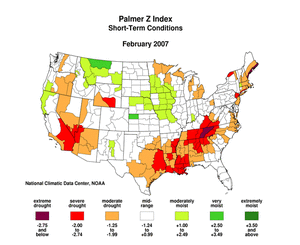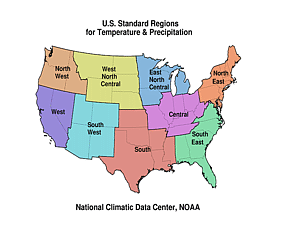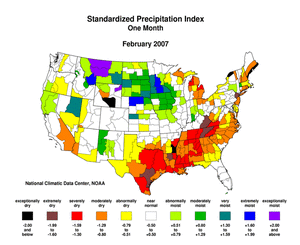At the end of February
extreme hydrologic drought was concentrated in Texas, Wyoming, and
northern Minnesota. Drought and abnormal dryness covered a broad
swath from central and southern California through the northwestern
Plains into the upper Midwest (February 27
Drought Monitor). Drought and abnormal dryness continued in
Florida and increased in the central and southern Appalachians. In
southern California and the upper Midwest, soil
moisture was low. Vegetative
health had become more stressed in the West. Streamflow
was low in the East, especially in Tennessee, in parts of the
Plains, and in Wyoming.
|
|
In Texas and Florida
mandatory or voluntary water restrictions were in place in several
municipalities. Private water wells were becoming dry in Texas.
Burning bans were common in drought-stricken areas, and wildfires
reduced forage in western Nebraska and increased in number in
Florida. The hay supply in the central part of the country was 20
percent of average, leading to increased prices and abnormal
selling of livestock at auctions. The killing of livestock and pets
by wild animals in southcentral Texas increased as the wildlife
searched for new food and water sources during the continuing
drought. Dryness has increased the salinity of Virginia's James
River and the Chesapeake Bay permitting the growth of parasites
that are harmful to oysters; in some areas the oyster death rate
was 90 percent. Impacts in drought-stricken areas have been
collected and summarized by county at the National Drought
Mitigation Center's
Drought Impact Reporter.
|



 NOAA's National Centers for Environmental Information
NOAA's National Centers for Environmental Information

